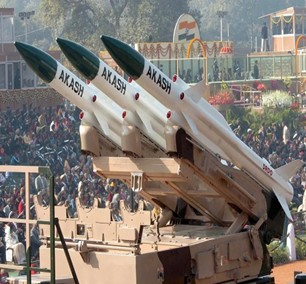Indigenous Akash Missile Strengthens India’s Air Defence
Indigenous Akash Missile Strengthens India’s Air Defence
Why in the News ?
India’s indigenously developed Akash missile system played a crucial role in countering Pakistan’s aerial attacks during Operation Sindoor. Its recent deployment underscores its operational importance, technological evolution, and strategic role in strengthening India’s air defence capability.
Key Features and Development Journey:
- Developed by DRDO, Akash is a mobile surface-to-air missile system used by the Indian Army and Air Force.
- It provides defence against enemy aircraft, UAVs, and missiles.
- Development began in the 1980s, inducted by IAF in 2014 and Army in 2015.
-
With 96% indigenous content, over 250 Indian industries are involved, including BEL and BDL.
Enhanced Capabilities and Future Upgrades
- Noted for accuracy, mobility, and resilience against electronic warfare with built-in ECCM
- Akash Prime: Improved for high altitudes and cold conditions, features an indigenous RF seeker.
-
Akash-NG: Designed to tackle high-manoeuvrability aerial threats with extended range (70 km) and low radar signature.
How the Akash System Works ?● Uses 3D Central Acquisition Radar (120 km range) and Rajendra fire control radar (80 km range) for tracking. ● The system is highly mobile and integrates missile launcher, radar, command and control units. ● Missiles travel at Mach 2.5, are guided by ramjet engines and an on-board seeker. ● Equipped with a 55 kg proximity-fused warhead, effective even without a direct hit. |




